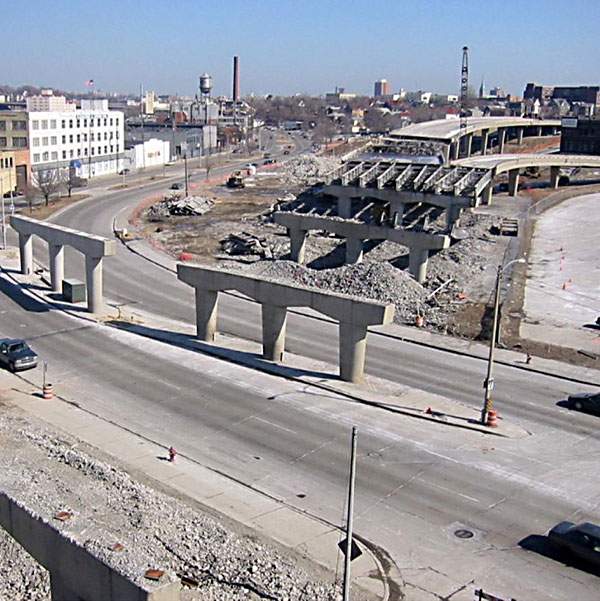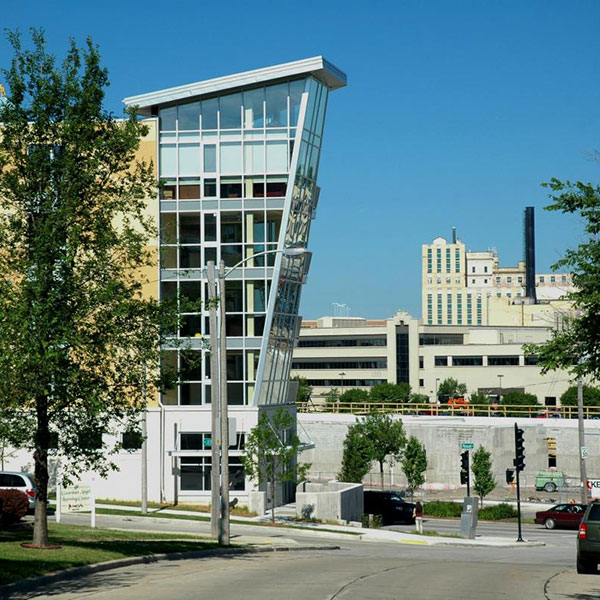Nov. 11, 2021
Across our many differences as human beings, research confirms what we know intuitively: We are hardwired to seek out connection and belonging; safety; familiarity and predictability; influence on our surroundings and future with purpose and creativity; and access to food, shelter, and other resources that is free of danger and shame. These basic needs and experiences make us human and, as such, connect us. Together, they also constitute our wellbeing.
Unlike wellness, which has acquired health-only, upper-income connotations, wellbeing is foundational. It is not an add-on or a mere lifestyle choice. Instead, backed by cutting-edge research and practice synthesized by the nonprofit Full Frame Initiative, we define wellbeing as, "The set of needs and experiences universally required in combination and balance to weather challenges and have health and hope."
Many think of wellbeing as an internal state, but as leaders in the building industry and other uncommon voices are beginning to acknowledge, what's outside our bodies often matters more.
On some level, everyone who helps shape the built environment knows this. We cannot will ourselves to be safe, feel included, or have shame-free access to shelter. That's why we care about things like safe tap water and street lighting; how park monuments signal who belongs in a public space; and whether we can telecommute and access telehealth services. Our environments provide or constrict our access to wellbeing in predictable yet profoundly unequal and unfair ways, particularly along lines of race and income. In short, our drive for wellbeing is universal, but our access to wellbeing is not.
The pandemic, its fallout, and our country's racial reckoning have underscored that fact, forcing wellbeing — and the question of who has meaningful access to it — into the foreground of our culture and public conversation. As we plan for one of the largest infrastructure investments in American history, we must reckon with how past investments have been used to institutionalize and deepen inequities and make concerted decisions to steer funding into the creation of a built environment that provides universal access to wellbeing.
In the next month or so, we will share in Planning magazine an actionable framework to do just this. But first, it's important to explore why such a shift is possible, opportune, and essential.
Harm or heal
Access to wellbeing is forged at the intersection of people, space, and systems — which is also where structural racism, misogyny, homophobia, classism, and more collide. To cite one example that last year's mass protests for racial justice compel us to face, the premium our country has long placed on the wellbeing of affluent white people is reflected and reinforced in our built environment: Assets are concentrated in some communities, while compounding trauma and disinvestment are concentrated in others.
How we choose to build will either harm or heal; history suggests it cannot be neutral. Over the course of the postwar federal urban renewal program, for example, an estimated one million people were displaced in the rush to build interstate highways and higher-income housing. The gains promised by those investments were not shared by all, and neither was the harm. Many of the vibrant neighborhoods displaced by this massive build were communities of color and, in some cases, working-class, predominantly white neighborhoods like Boston's West End.
Psychiatrist and urbanist Mindy Fullilove defines the impact on affected communities, including a staggering 1,600 predominantly Black neighborhoods, as "root shock," or a profound traumatic stress that has contributed to intergenerational harms, including a loss of economic vitality, social cohesion, and sense of place. Yet half a century after widespread community protests stopped many urban renewal plans, we continue to propagate harms through what, where, and how we build — or don't.
Removing some of those highways, as Milwaukee, San Francisco, and roughly a dozen other cities have begun to do, is a start toward healing. As of this writing, a federal proposal to set aside $25 billion to take down more highways and rebuild communities has been pared back significantly in negotiations on Capitol Hill. It's now a $1 billion Reconnecting Communities program in the surface transportation reauthorization that is a core part of the broader bipartisan infrastructure package.

When the Park East Freeway in Milwaukee came down, it was replaced by tree-lined McKinley Boulevard. Photo courtesy of Milwaukee Department of City Development.

The Flat Iron building in the Park East redevelopment zone, part of the restoration of the city's pre-highway urban grid. Photo courtesy of City of Milwaukee Planning Department.
Climate change — and the way our infrastructure responds to it — also threatens disparate access to wellbeing. A recent analysis by the Natural Resources Defense Council and WE ACT, a community-based environmental justice group in New York City, shows that low-income communities of color experience more extreme heat than whiter, more affluent neighborhoods in the same city. One significant cause is wide disparities in tree cover and green space. The enormous stakes and inequities associated with climate risks and action — from major new flood works to managed retreat and more — will only become greater and more urgent in the months and years to come.
Planning for wellbeing
Importantly, planning for equitable access to wellbeing is not in tension with traditional infrastructure concerns like state of good repair. In fact, it's just the opposite. And while the concept might be new to many planners, the work ahead aligns with long-cherished planning goals, like public engagement and innovative and adaptive solutions. It also offers a powerful way to deliver on other vital goals related to climate action, economic opportunity, and racial equity by committing to avoiding new harms, enhancing lives, and building community.
Significantly, this effort doesn't require us to start from scratch; we can learn from many existing built examples, some of which integrate infrastructure into larger development plans. It does, however, require a renewed dedication to meaningful and creative public engagement.
Take Detroit's Fitzgerald neighborhood. With the prospect of major public and private reinvestment on the table, re-visioning and planning redevelopment centered on the community's priorities by empowering residents to help select contractors and vendors.
Over the past decade, new investment, including public and philanthropic subsidies to enable housing revitalization after years of abandonment and disinvestment, helped lead to repaved streets and upgraded public transportation. New parks and a collaborative center are also strengthening community connections and resilience. And when local Marygrove College went out of business, the community helped swiftly reimagine the campus as a cradle-to-career educational, civic, and economic engine. Longer-term plans include creating a community land trust to minimize displacement and support Black homeownership and ongoing stewardship.
Linking new or upgraded infrastructure to well-programmed public space, an increasingly popular approach in many parts of the country, can likewise expand access to wellbeing. A new bridge spanning Washington DC's Anacostia River will produce a major community benefit: the city's first elevated public park. When complete, the park will incorporate environmental education and the arts, provide a space for healthy recreation for many under-served residents, and connect two neighborhoods that were economically and socially divided by the river.

The proposed elevated public park on the 11th Street Bridge crossing Washington, D.C.'s Anacostia River features community spaces for recreation, education, and the arts. Rendering courtesy of OLIN+OMA.
What's more, the planning process produced an Equitable Development Plan, with housing, small business, workforce, and other strategies to address concerns related to historic disinvestment, rising real estate prices, and resident displacement. In multiple dimensions, the bridge park and the process used to create it reflect a commitment to "transformative placemaking" that goes well beyond traditional infrastructure service standards — in this case, what makes for a good bridge, and how to use infrastructure to advance inclusion, connection, vibrance, and overall wellbeing.
These efforts illustrate that creating equitable access to wellbeing can be an instrument not only for advancing social and economic justice, but also related concerns of the planning community, like climate, spatial, housing, and health justice.
A critical opportunity
It's wonderful that we can point to examples of places and planners getting it right, especially to punctuate a history of investments that have been much less aligned with wellbeing. But with trillions of dollars on the line, and without a shared commitment and tools for decision making to guide us, these positive examples will continue to be outliers.
As a country, we simply cannot afford this. The climate crisis and the pandemic have reminded us that while we can't predict the future, we can certainly inform and design for it. The infrastructure, housing, and other built environment decisions made in the months and years to come will be a powerful part of that. To that end, we must — and we can — consciously and ambitiously shape our future built environment in support of a country where everyone has a fair shot at wellbeing.
In our upcoming Planning article, we'll share an actionable framework of principles for planning and designing major investments in ways that expand access to wellbeing. We'll also invite the planning community to generate questions and open source ideas and solutions.
Tailoring plans and projects with widely available, evidence-based, and flexible frameworks is essential, because most decisions about how to deploy infrastructure funding will be made at the state and local levels, not in Washington. And when it comes to compliance-driven infrastructure agency cultures and the value-engineered solutions they typically accept, we need to shift quickly from "that's not my job" to "this is a critical opportunity and a moral obligation."
In other words, let's make shovel-worthy our new default. Shovel-ready no longer suffices.




